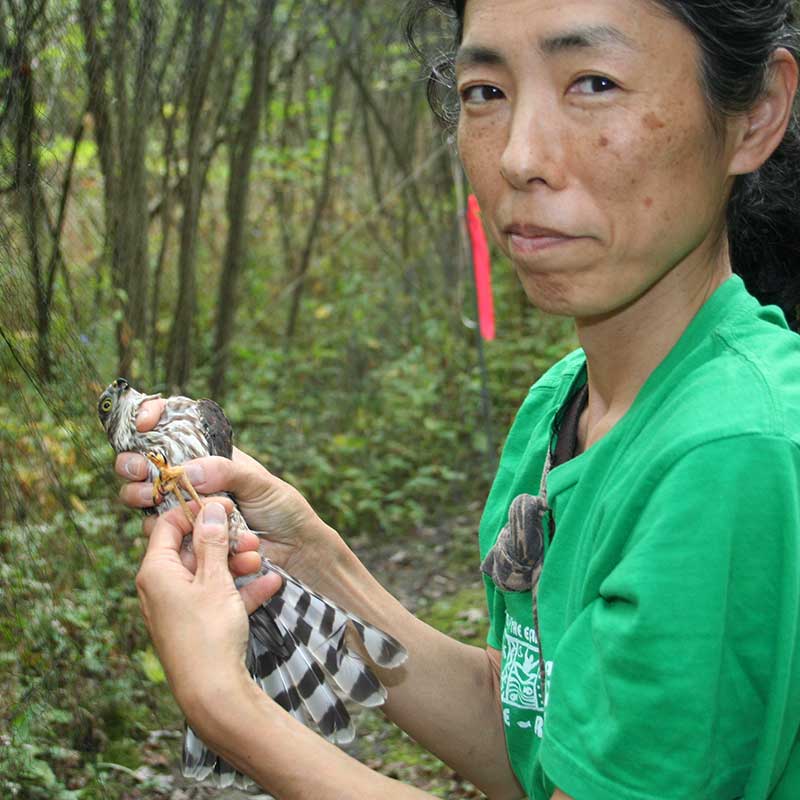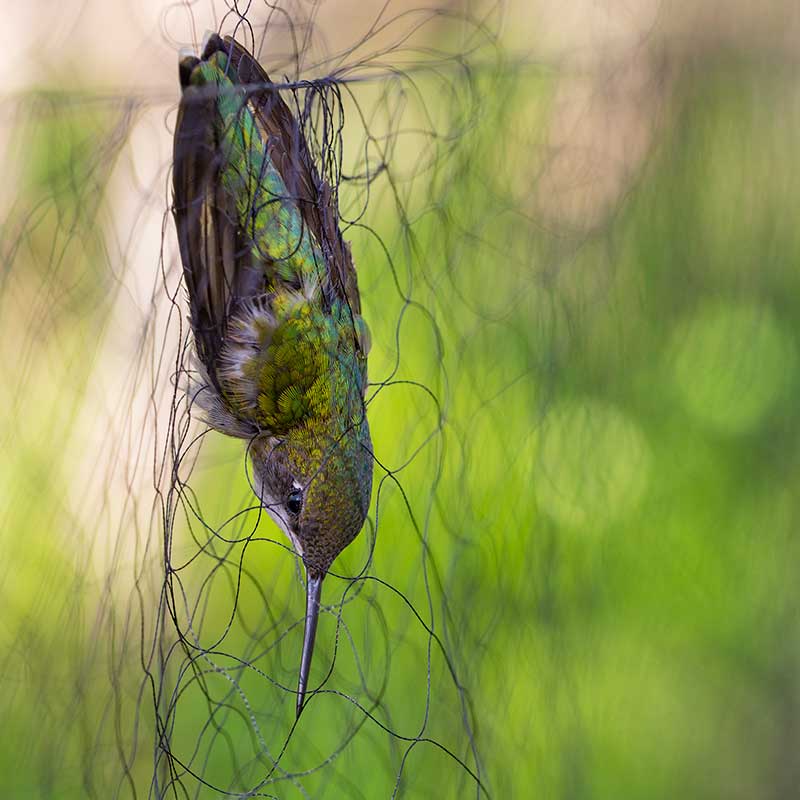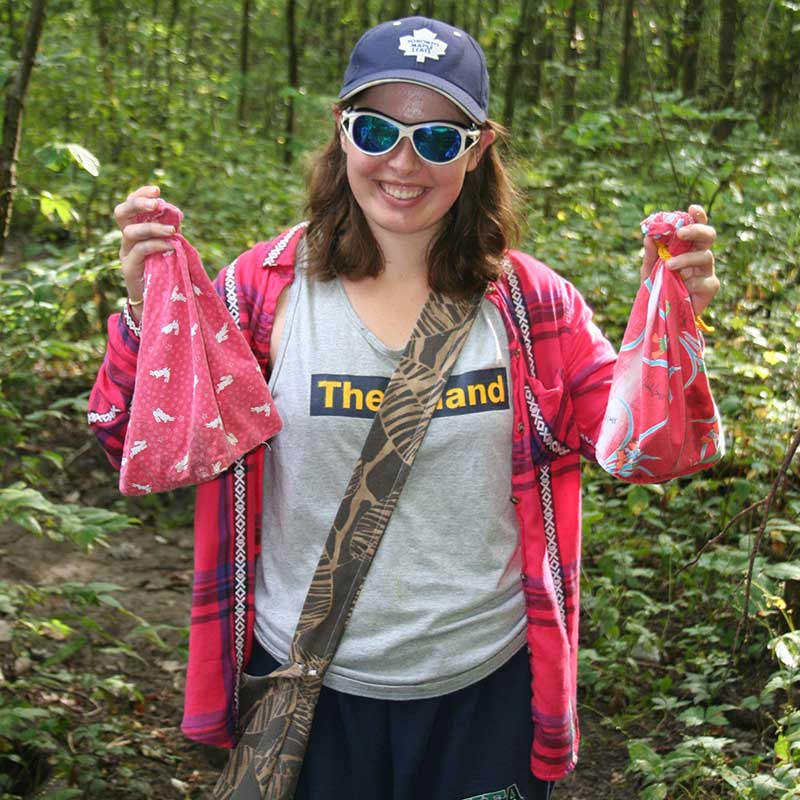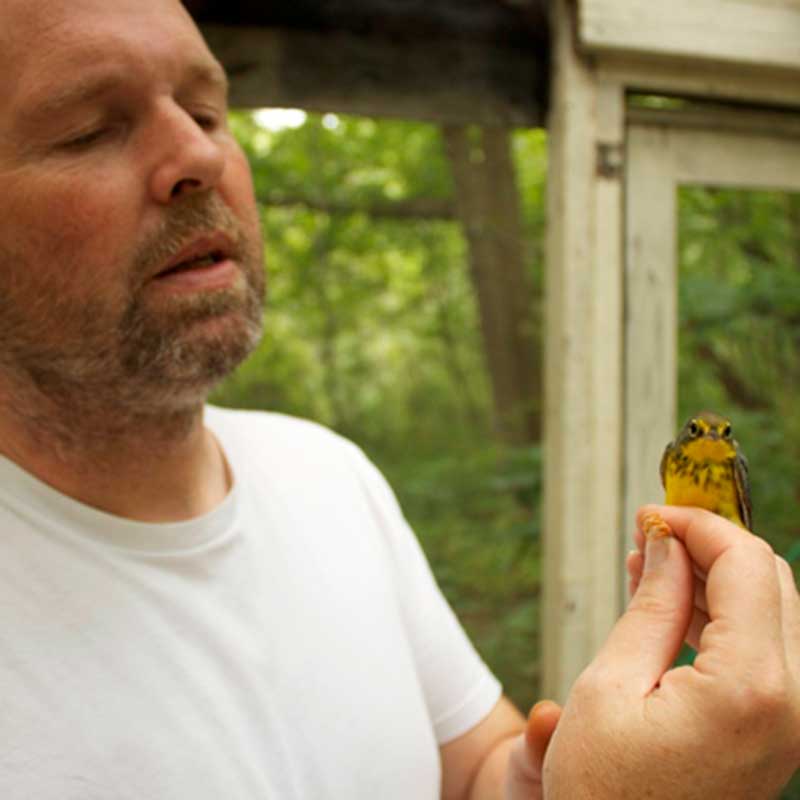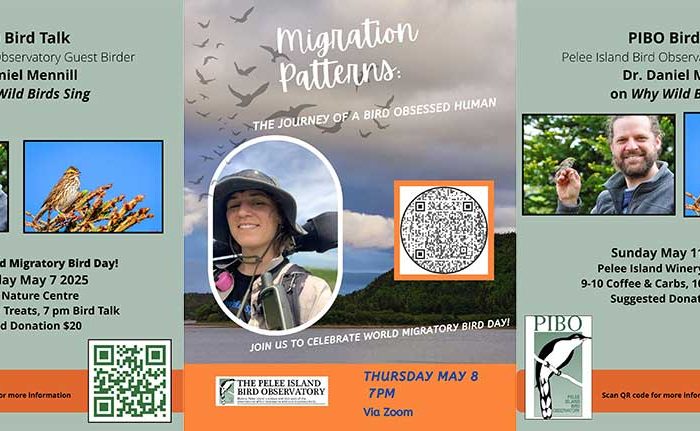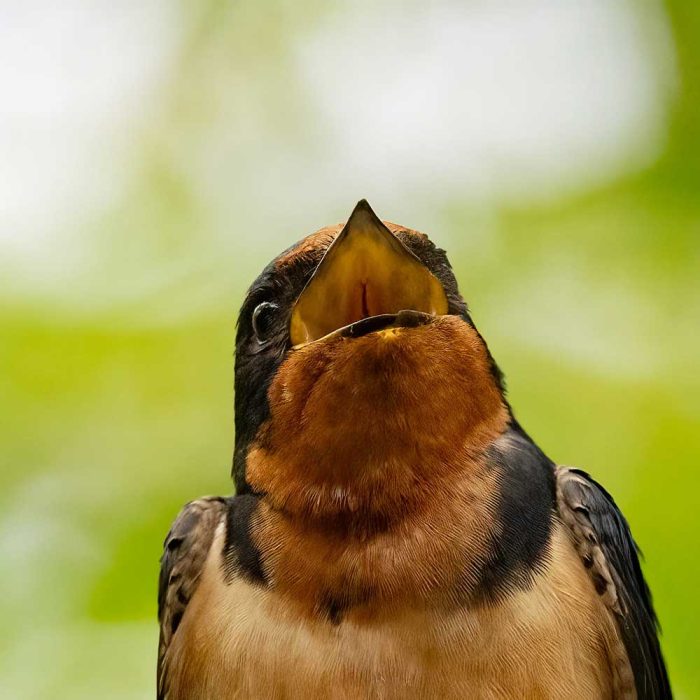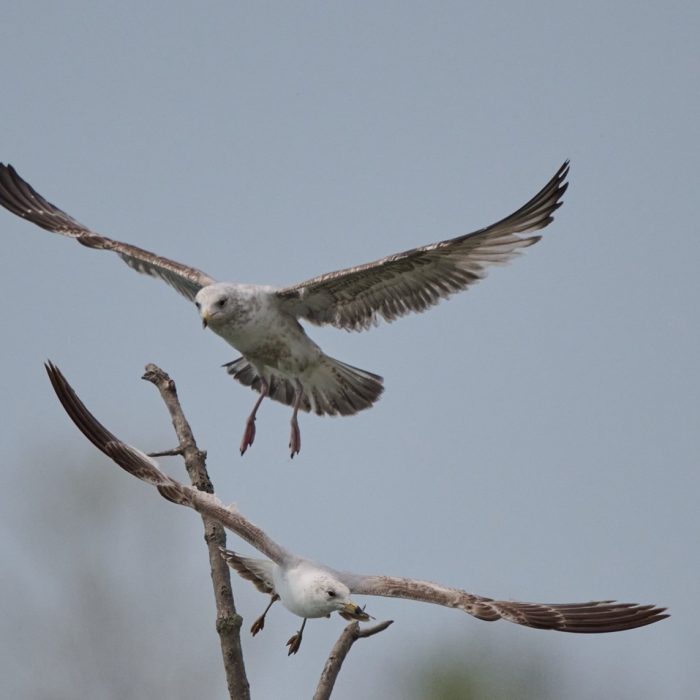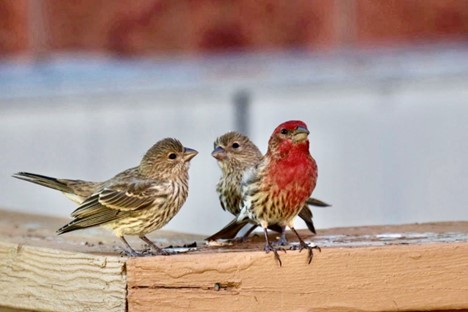Bird Banding
Since 2004, PIBO staff and volunteers have banded more than 50,000 birds – about 3,000 birds a year. The stories their vital statistics tell provide important insights into the health of individual birds as well as the migratory patterns and habits of the species in general.
We use mist nets to capture birds. Our mist nets are fine, nylon mesh that we set up in the woods near Fish Point. They’re two metres high and nine metres long, and almost totally invisible to birds (they may appear as a fine ground mist, which is why they are called mist nets). We set up two kinds of nets: ten with smaller mesh (30 mm diagonal squares) to capture songbirds, and five with larger mesh (120 mm diagonal squares) are strong enough to hold owls. Mist nets are the least harmful way of capturing birds for banding, with an average injury rate of 0 to 0.59 percent.
Mist nets were first used in Japan in the 18th century by bird hunters. During the Second World War, Oliver L. Austin, an American ornithologist serving in the U.S. Navy, saw the Japanese nets and introduced them to North America in 1947. Since then our knowledge of bird health, population densities and movement have expanded greatly.
The nets are open for six hours a day, starting a half hour after sunrise, from April 15 to the end of May, and again from August 15 to the end of October. When the nets are open, we check them every 30 minutes, so that no bird is tangled in the net for long.
When we capture a bird, we very gently release it from the net, place it in a cloth bag, and bring it to the banding station. There we extract it from the bag and, holding it in a precise way so the bird isn’t stressed or injured by trying to escape, we take various measurements — overall mass, wing chord (from the wrist joint to the tip of the longest primary feather, with the wing bent at a 90-degree angle), breeding status, body fat index, sex, age and molt status.
Several types of bands are used. Plain aluminum bands are coded so researchers anywhere can determine where and when the bird was banded, and get access to its vital statistics at time of capture. Coloured bands allow researchers to see, with binoculars, whether the bird is male or female, and sometimes where it was banded, without having to recapture the bird. Only about 1 percent of bands on songbirds, and 10 percent of bands on game birds, are recovered each year.
The measurements collected provide a snapshot not only of the individual bird’s condition, but also of the health of the species. PIBO sends these detailed reports to the Bird Banding Office (BBO) maintained at Carleton University by the National Wildlife Research Centre, a division of the federal Department of the Environment and Climate Change.
Some of the more important statistics kept by the BBO relate to bird migration and longevity. For example, in August 2016, the BBO notified us that a Swainson’s thrush we banded the previous fall had been recaptured in Alaska in July. Since thrushes typically winter in Argentina, the BBO calculated that the Swainson’s we banded had flown more than 18,000 kilometres in 10 months.
Longevity records are another way of determining a species’ health. At the moment, we know that a typical Ruby-throated hummingbird lives about nine years, a Downy woodpecker almost 12 years, a Mallard duck about 25 years, and a Mourning dove more than 30 years. When these averages start to go down, we know that a species may be in trouble.
Banding also raises interesting questions about bird behaviour. On September 21, 2019, Field Coordinator Sumiko Onishi released a banded first-year female Sharp-shinned hawk. A month later we were notified by the U.S. Bird Banding Laboratory that the hawk had been recaptured in Ohio on October 22. The Canadian Atlas of Bird Banding shows a disproportionately large number of human encounters with first-year female Sharp-shins. Does this mean young females spend more time in human territories? Are they foraging more than males? Do females hunt at lower altitudes?
The BBO relies on the public to report when a banded bird is found. Wild birds can’t be captured unless you have special training and a permit from the BBO, but if you find a deceased bird with a band on its leg, report the band’s information to the BBO, either by email () or telephone (1-800-327-BAND). You’ll receive a Certificate of Appreciation from the BBO as well as the satisfaction of knowing that your effort has helped researchers learn more about birds and their habits.

